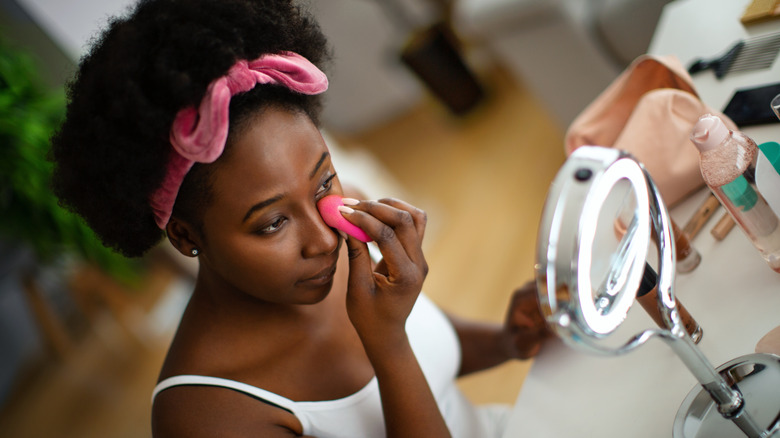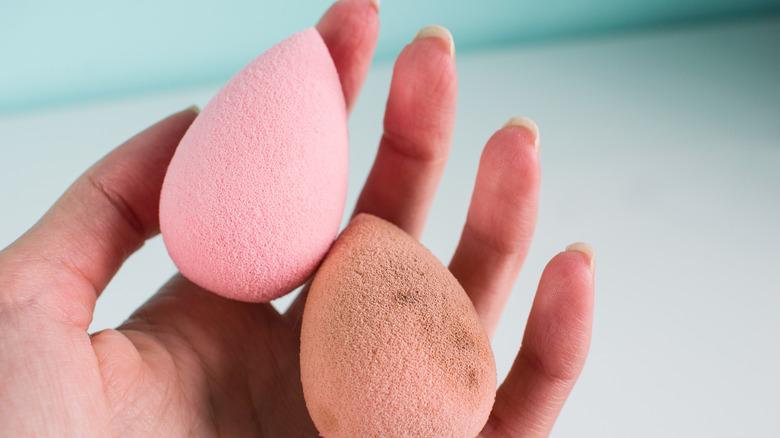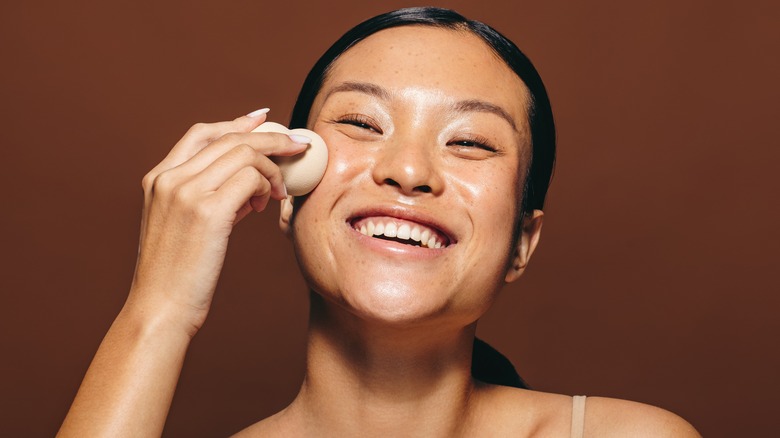Why You Should Be Double-Cleansing Your Beauty Sponges
Beauty sponges have revolutionized the way people apply makeup by creating flawless and even finishes along even the most contoured or angled parts of a person's face. However, while the beauty world's love of makeup sponges shows no signs of slowing down, these nifty tools are often not cleaned as much as they should be, which can lead to other, more hazardous, side effects.
A 2020 study in the Journal of Applied Microbiology found that beauty sponges had the highest risk of germs out of five different beauty products. The study found that 93% of beauty blenders had not been cleaned and 64% had been used after being dropped on the floor. With that in mind, the best rule of thumb for washing your beauty sponge is to do it immediately after use. Not only will your products stain your sponge if they're left on too long, but dirt and oil from your skin can sit in your sponge breeding bacteria and germs.
With that being said, a single daily cleaning might not be enough. There is a growing push (and range of products) to help people start double-cleansing their beauty sponges. Whether you don't clean your sponges at all (PSA: You really should be cleaning them) or are a meticulous once-a-day cleaner, moving to a double-cleansing routine might be a good idea. Let's break down what happens when your beauty sponge isn't clean, and why a double-cleansing habit might be right for you.
Germs and breakouts
Natural oils, dirt, dead skin, bacteria, and other products on your skin can all end up in your beauty sponge alongside your makeup products. This combination can wreak havoc on your skin leading to acne, rashes, and even infections. Especially scary is the increased risk of bacterial infections that can occur thanks to your beauty sponge's repeated contact with your eyes and mouth area. This risk is amplified if you are battling acne and have any open cuts or inflamed skin areas on your face.
If you find yourself having to apply more makeup than ever to cover breakouts in places like your cheeks, you might actually be causing your own problem. Dr. Annie Gonzalez, a Miami-based board-certified dermatologist told Byrdie, "Everyone has different skin and oil gland tendencies. But in general, isolated breakouts on the cheeks are a byproduct of the environment and poor skincare." By not regularly washing your makeup brushes, blenders, and sponges, you might actually be causing the irritation that you're trying to cover up in the first place. Make sure to keep an eye out for acne in unusual places outside of your more typical hormone-influenced hot spots as this could be a sign the acne is being caused by your skincare and beauty tool habits.
Double-cleansing your beauty sponges
Double-cleansing involves the use of both oil and water-based cleansers to ensure the optimum cleanliness of your beauty sponge. If you're thinking to yourself that adding oil to this situation sounds like a bad idea, fear not, as this method is sure to get your beauty blender squeaky clean, even if you have naturally oily skin. By soaking your beauty sponge in an oil or oil-based cleanser, any leftover or soaked-in makeup is essentially loosened. This makes it easier to be rinsed away than if you only utilize a single water-based washing method, and therefore ensures your beauty sponge is more thoroughly cleaned. Once you've rinsed out the oil-based cleanser, you should notice the minimization of any stains on your beauty sponge.
You can utilize any water-based cleanser that you prefer for the final washing in your two-step process. This cleanser should help to wash away any leftover makeup residue loosened by the oil cleanser and also help to remove any residual oil cleanser that might be lurking in your sponge. After you're finished with your double-cleansing, you should have a clean (and bacteria-free) tool for your next makeup application. By cleaning your beauty sponge more regularly, you can ensure it not only lasts longer but that it also helps keep your skin looking its best.


